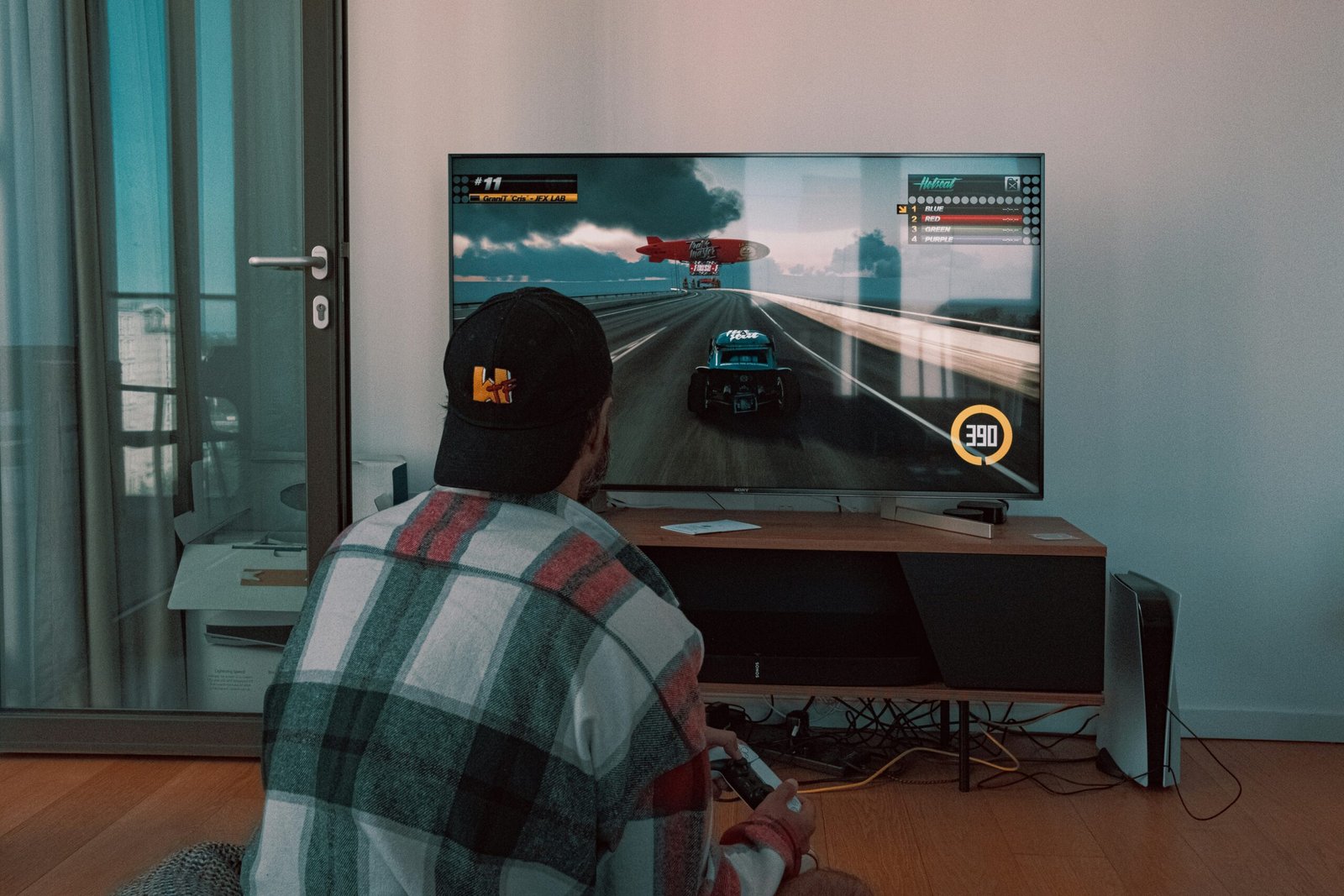Looking for the best gaming TV for your PS5 or Xbox Series X? Choosing the right display can make the difference between a good gaming session and an unforgettable one. With consoles now supporting 4K resolution, 120Hz refresh rates, and advanced HDR, a standard TV often can’t keep up. The right gaming TV offers low input lag, HDMI 2.1 connectivity, and vibrant visuals that let you experience next-level performance.
In this guide, we’ll break down the features that matter most, share buying tips, and compare budget-friendly and premium models so you can find the perfect fit for your setup.
Why Refresh Rate, HDMI 2.1, and Input Lag Matter
When it comes to gaming TVs, three features make the biggest difference:
Smooth Motion with 120Hz Refresh Rates
A native 120Hz panel is essential for next-gen gaming. It keeps fast-paced action fluid, reduces motion blur, and gives you a competitive edge in shooters, racing, or sports titles. For example, a 120Hz display ensures that a quick flick of your joystick translates into sharp, stutter-free motion on screen.
HDMI 2.1 for Next-Gen Connectivity
HDMI 2.1 ports are a must for 4K at 120Hz. They also support features like:
- ALLM (Auto Low Latency Mode): Automatically switches your TV into game mode for lower lag.
- VRR (Variable Refresh Rate): Syncs the frame rate between your console and TV to prevent screen tearing.
- Multiple Inputs: Many TVs now include 2–4 HDMI 2.1 ports so you can connect both PS5 and Xbox Series X without swapping cables.
Low Input Lag for Faster Response
In competitive gaming, every millisecond counts. TVs with input lag under 13ms let your button presses register instantly on screen. That quick responsiveness can be the difference between winning and losing in online matches.
Gaming TV Buying Guide: What to Look For
When shopping for the best gaming TV, focus on the specs that directly impact gameplay. Here’s your checklist:
- Native 120Hz panel for smooth motion
- HDMI 2.1 ports (at least two)
- Low input lag (ideally under 13ms)
- HDR performance for vibrant color and detail
- Optimal screen size (55–65 inches works best for most setups)
- Smart features for streaming and updates
💡 Pro Tip: If you sit about 6–9 feet away, a 55- to 65-inch screen delivers the perfect balance of size and clarity.
Budget-Friendly vs. Premium Options
Not every gamer wants—or needs—to spend thousands on a TV. Here’s how the options compare:
Budget-Friendly Picks
Hisense U7N
The Hisense U7N delivers excellent value for gamers. It supports 4K at up to 144 Hz, with VRR and ALLM ensuring smooth motion and reduced tearing. Game Mode keeps input lag very low, which is crucial for competitive play. Two of its four HDMI ports are full HDMI 2.1, giving you the bandwidth needed for PS5 and Xbox Series X. Keep in mind that while performance is strong overall, dark scenes at 60 Hz may show some motion smearing, and reflections can be noticeable in bright rooms.
TCL QM7
The TCL QM7 is another strong mid-range option with a native 120 Hz panel that can reach 144 Hz in VRR mode. It includes HDMI 2.1 features like ALLM, VRR, and FreeSync, and its low input lag keeps gameplay responsive. Mini-LED backlighting with local dimming zones provides solid HDR performance for the price. However, darker scenes may reveal ghosting or smearing, and only certain HDMI ports provide full 2.1 bandwidth. For the cost, it’s a balanced choice for gamers who want performance without a premium price tag.
Premium Picks
LG C4 OLED
The LG C4 OLED is one of the best all-around gaming TVs available. It supports refresh rates up to 144 Hz with near-instantaneous response times (0.1 ms) and ultra-low input lag. Four HDMI 2.1 ports make it easy to connect multiple consoles while maintaining full bandwidth. The OLED panel delivers perfect blacks and vibrant colors, giving cinematic depth to every game. While it excels in darker rooms, peak brightness is lower than high-end LED competitors, so reflections in very bright spaces may be more noticeable.
Samsung S95D OLED
The Samsung S95D combines OLED’s exceptional contrast with QD-OLED enhancements for brighter HDR and richer colors. With four HDMI 2.1 ports via its One Connect box, plus VRR, ALLM, and low latency, it’s built for next-gen gaming. Its “OLED Glare Free” matte coating helps reduce reflections, making it more versatile in different lighting environments. Like all OLEDs, however, performance is best in controlled lighting, as strong ambient light can slightly reduce perceived black levels.
Final Takeaway
If you own a PS5 or Xbox Series X, investing in the right TV can completely transform your gaming experience. Focus on TVs with 120Hz panels, HDMI 2.1 ports, and low input lag—these are non-negotiable for next-gen performance.
- On a budget? Go for the Hisense U7N or TCL QM7.
- Want the absolute best? The LG C4 OLED or Samsung S95D deliver unbeatable picture and responsiveness.
No matter which you choose, you’ll enjoy smoother gameplay, sharper visuals, and a setup ready for the future.
FAQ
What TV specs are essential for PS5 and Xbox Series X?
A native 120Hz refresh rate, HDMI 2.1 ports, VRR, and input lag under 13ms are must-haves.
OLED vs. QLED: Which is better for gaming?
OLED offers perfect blacks and faster response times. QLED/QLD-OLED provides higher brightness and no risk of burn-in. Both are excellent—your choice depends on your room setup and preferences.
What’s the ideal screen size for gaming?
For most living rooms, 55–65 inches is ideal if you sit 6–9 feet away.
How many HDMI 2.1 ports should I look for?
At least two ports, but four is better if you plan on connecting multiple consoles or devices.
What’s a good budget for a gaming TV?
Expect to spend $800–$2000 for a quality mid-range or premium model. Entry-level models start around $300.
Does HDR matter for gaming?
Yes—HDR enhances color, contrast, and detail, making games look more immersive and lifelike.





